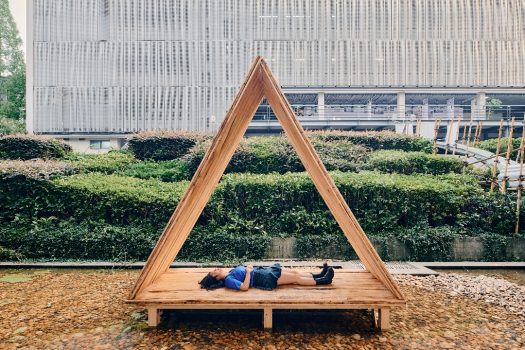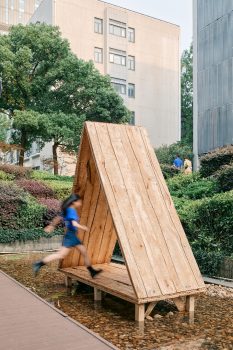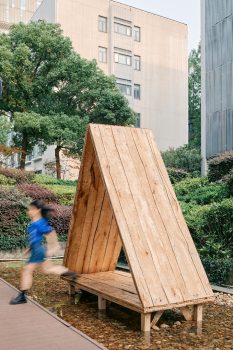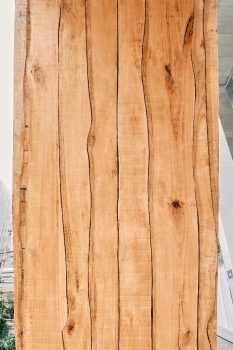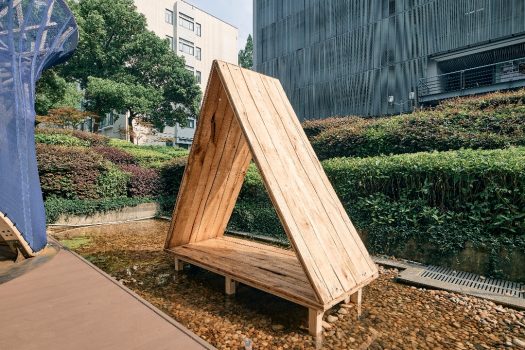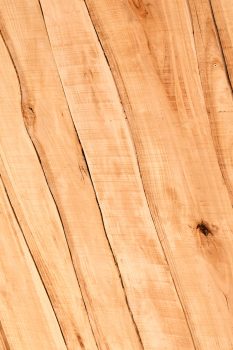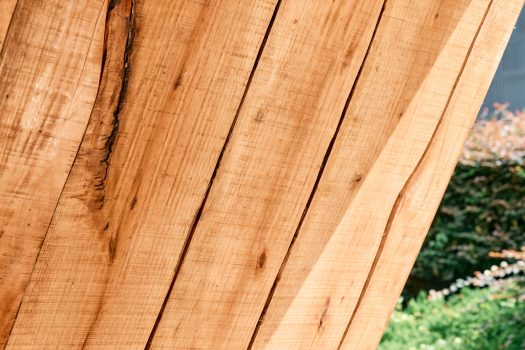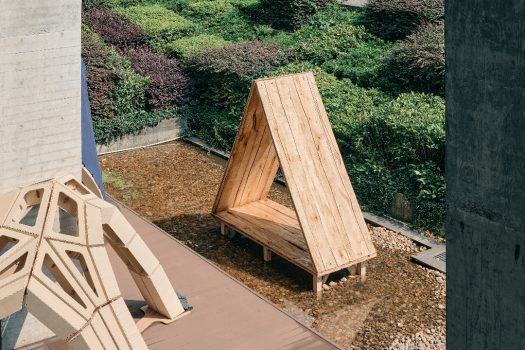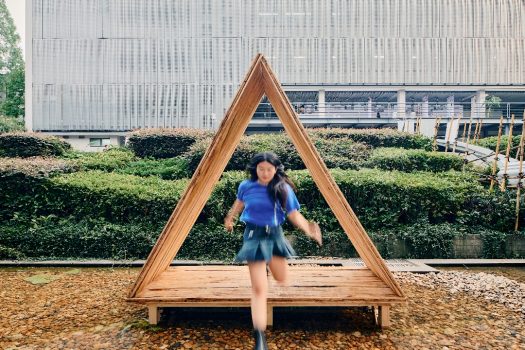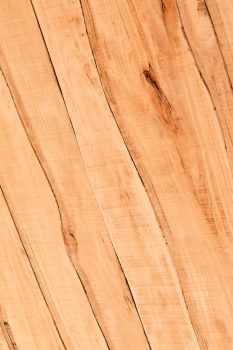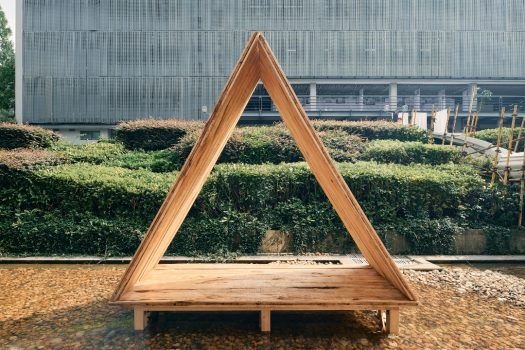Maestro, a new construction-technology startup born out of the design and innovation office CRA-Carlo Ratti Associati, is unveiling the prototype for “A.I. Timber”, a new method for sustainable cross-laminated timber (CLT) production that uses artificial intelligence to preserve the original contour of each tree. A proof-of-concept structure, developed along with students and researchers from MIT and Tongji University, is on display at the “Digital Futures” exhibition in Shanghai until the fall.
As the construction industry works to reduce its emissions – cement production alone is responsible for 8% of global CO2 – mass timber has emerged as an alternative for sustainable construction. However, the industrial sawing process of cutting unique trees into standardized panels generates a large amount of wood waste.
A.I. Timber offers an alternative. Rather than reducing irregular trees into straight lines, Maestro uses A.I. and digital machining tools to scan a set of raw logs, flat saw them into boards, and identify the optimal sequence to fit them together. The process results in timber panels with tesselating boards which match one another like puzzle pieces, while shaving off as little of the tree as possible.
“Timber isn’t just a substitute for concrete; it unlocks new possibilities for prefabricated construction,” says Mykola Murashko, the 23-year-old Cambridge graduate who co-founded Maestro with Carlo Ratti, Director of the M.I.T. Senseable City Lab and founding partner at CRA. “Because engineered wood products are lightweight, renewable and dimensionally stable, we can design an entire building in our factory then ship the flatpack of its components to construction sites around the world. Maestro wants to revolutionize how we build, and that dream is rooted in innovations like A.I. Timber.”
Maestro is a newly-incorporated startup that aims to revolutionize the construction industry with bespoke prefabrication. After years of experiments in construction and building materials at CRA, Maestro uses technology to connect design and manufacturing, allowing a European supplier network to manufacture custom parts at a massive scale and create tailor-made, shippable buildings from scratch. This method promises to make building better, faster, and greener than ever before.
“Wood is one of the oldest building materials we have, and A.I. is letting us use it more sustainably,” says Carlo Ratti. “A.I. could reduce wood waste in cross-laminated timber (CLT) production by up to 30%, but that’s only one of the benefits. It’s also beautiful: the irregular geometry celebrates the original shape of the tree. We are using the artificial to bring out the brilliance of the natural.”
The first prototype of A.I. Timber was produced in Shanghai earlier this summer as part of the DigitalFUTURES conference organized by Tongji University professor Philip Yuan. During a one-week workshop Murashko and Nikita Klimenko of MIT instructed a team of international researchers on the use of A.I. Timber, building a proof-of-concept structure: a small, triangular pavilion visitors can interact with. The exhibition is open at Tongji University’s gallery until 15th September 2023.
CREDITS
A.I. Timber
A project by Maestro Technologies
Maestro team: Carlo Ratti, Mykola Murashko, Nikita Klimenko, Ginevra Nazzarri
In collaboration with Tongji University and DigitalFUTURES
Adelaide Tremori, Dan Luo, Filippo Innocenti, Hongsheng Jiang, Hanlin Dong, Jin Gao, Jinghan Wu, Lijun Xiao, Maria Francesca Toti, Guglielmo Sobrini, Qiming Sun, Ruipeng Wang, Wenlei Yang, Wenzhuo Zhao, Xu Cheng, Yantong Xie, Yuqing Huang, Ziying Qi, Toto Tan, Zhihao Zhou, Zhiyi Lin


